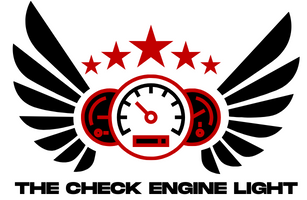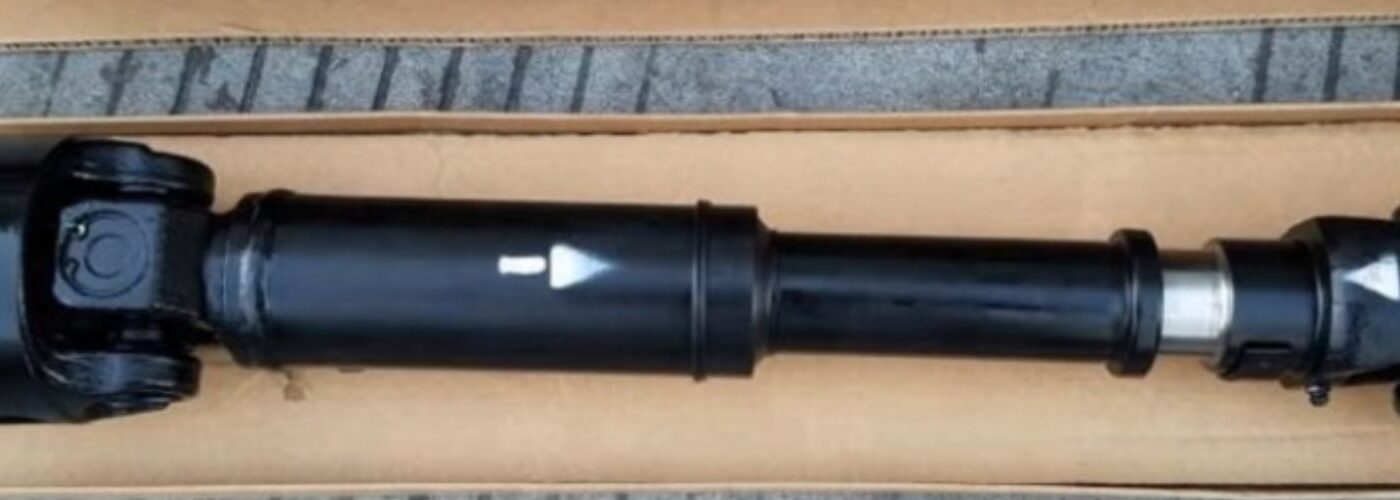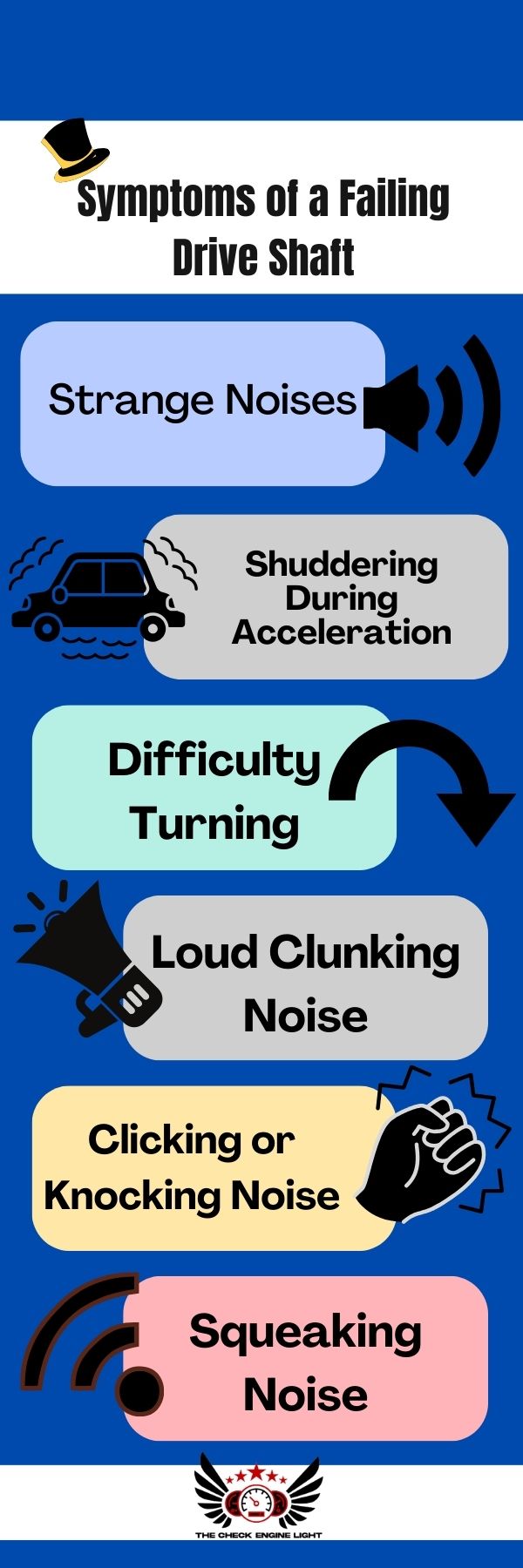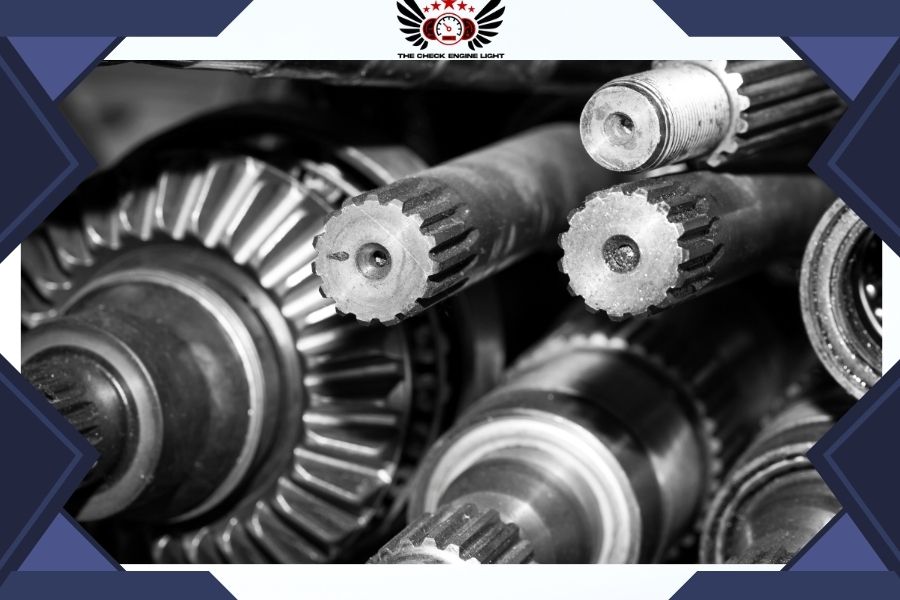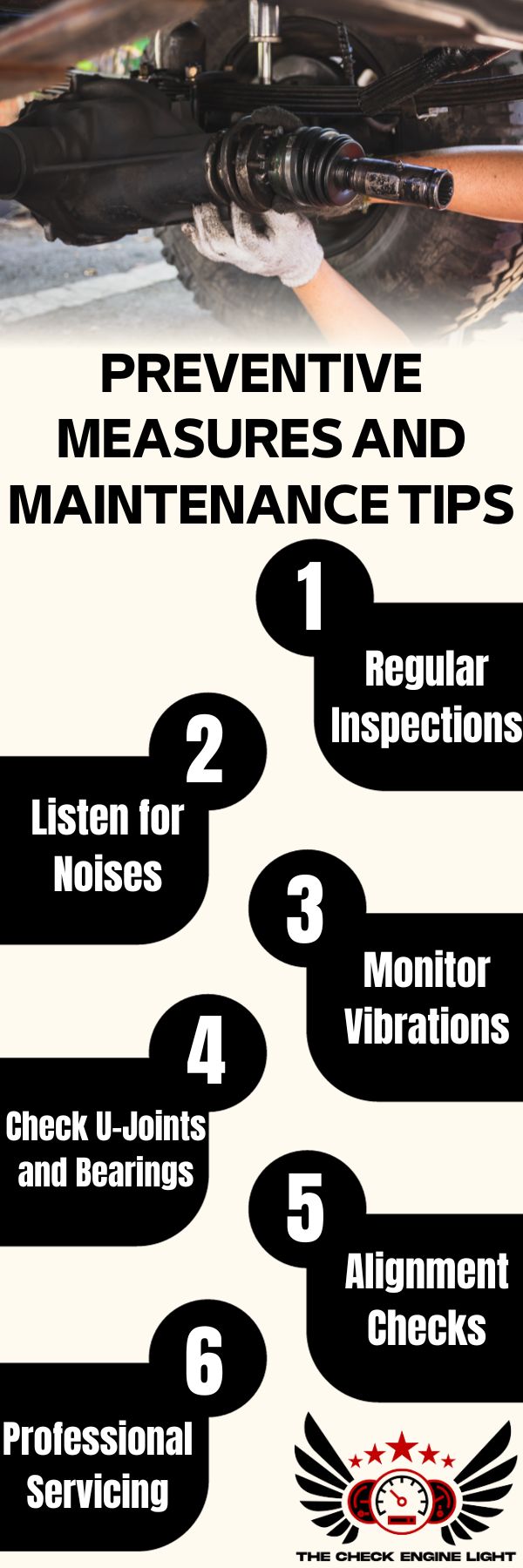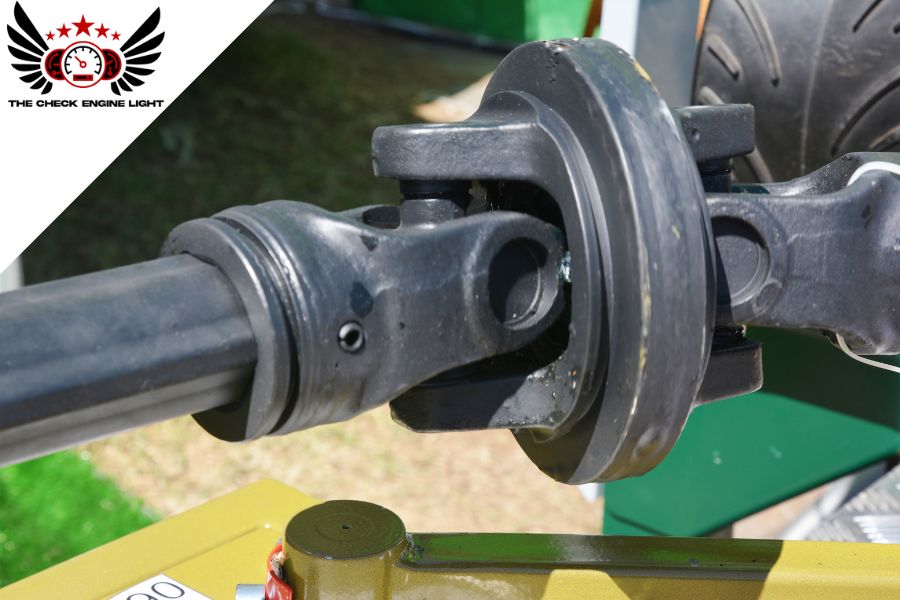Hi there. I’m Gavin J. Knox, the founder of Check Engine Light. I’ve been working with various vehicles and being under their hood for years and today, I going to tell you the importance of a shaft issue.
Imagine it’s a glorious sunny day and you are traveling confidently with your reliable sedan. But all of a sudden, you feel a vibration under your feet that’s getting more intense as you drive more. Due to its persistence, you can’t consider it as a rough area of road or a hole.
I was struggling with myself to figure the issue out but I didn’t have enough time to. Because I geared my transmission shouts and after some moments I found myself stopping my car at the roadside.
I told this all to emphasize a faultless drive shaft.
You might also enjoy: Chevy 2500 Bolt Pattern: Ultimate Guide [2023]
So Can A Bad Drive Shaft Affect Transmission?
Yes, the drive shaft is designed to convert the engine’s power to the wheels and in case of being faulty, it significantly affects transmission. If it fails you face rough gear shifting, delays in gear shifting, and lack of responsiveness.
It even sometimes leads to complete transmission failure. Typically, replacing the drive shaft is a costly repair and I highly suggest you address it promptly to prevent costly repairs.
Understanding Drive Shafts and Transmissions
The drive shaft is a necessary component of the vehicle. It acts like a connector or a messenger.
It’s a rod that connects the transmission to the wheels, so it plays a large role in your vehicle’s performance and mobility.
It has different systems in rear-wheel-drive vehicles and four-wheel-drive vehicles. In the first one, the drive shaft is continued from transmission to the rear axle. However, in four-wheel drives, there are two drive shafts to connect both rear and front axles.
The transmission is the vehicle’s brain because whether it’s manual or automatic, it decides the amount of power that the vehicle needs at each moment. Furthermore, it monitors the overall performance of the engine and ensures its proper function.
To experience a smooth drive, the transmission and drive shaft should work together faultlessly. In case of any malfunction, unbalanced, worn connections, or bends, the transmission will be under extra pressure and you’ll get in trouble.
A faulty drive shaft leads to a variety of issues. Ranging from a gear slippage to complete failure. Otherwise, if you preserve it well it gives you an enjoyable driving experience and also increases your transmission’s longevity and efficiency.
Can A Bad Drive Shaft Affect Transmission?
The definite answer to this question is yes. I, as an experienced specialist in the automotive world, assure you that in many cases the main reason for catastrophic problems of transmission is the faulty drive shaft.
Each car owner, car enthusiast, or even a potential owner should deeply understand the intricate connection between these two vital components.
I’m going to shine a light on this question to show you the impacts of a bad drive shaft on transmission.
First of all, what does a drive shaft do? As I mentioned before in this article it’s there to transfer the power from engine to wheels.
This job should be done correctly for a faultless drive and if not, you face issues like misalignment, imbalance, or wear of bearings or joints.
So due to the imbalance that a faulty drive shaft provides, if you continue driving in this condition your transmission will be under extra strain.
Because it has to work harder to make up for this imbalance and as a result, you face overheating or wear of the transmission’s internal components.
Repairing the transmission is considered a costly repair especially if it’s severe to the extent that requires a complete transmission replacement.
Moreover, a faulty drive shaft causes misalignment. Especially in four-wheel drive vehicles a drive shaft should transfer power to all four wheels. If it doesn’t, the overall balance and alignment will be disrupted and this puts extra strain on transmission.
A bad drive shaft also causes vibration. You shouldn’t neglect these vibrations because, over time they cause wear and tear of bearings, gears roars, and even loosening of vital components of the transmission.
If you ask me, you should be attentive to your vehicle’s performance to detect a bad drive shaft. In case of this issue, you face rough gear shifting, delays in acceleration, or significant noises from the vehicle.
These symptoms are a telltale sign that something is wrong with the transmission and it requires immediate attention.
You can easily prevent the drive shaft failure and its costly repairs by regularly inspecting the drive shaft. Check it to see if it has signs of cracks, rust, or leaking seals.
You should also be attentive to your car’s erratic behaviors like unusual noises or vibrations.
So beware of the drive shaft because it’s a pivotal component in a car’s performance and its failure affects other parts of your vehicle.
The best you can do is stick to regular check-ups and address the potential issues promptly. In this way, you ensure not only your car’s longevity but also your safety on the road.
A healthy transmission system means a healthy, safe abs reliable vehicle with a happy confident driver.
What happens if my drive shaft breaks while driving
I’ve had an experience of my drive shaft being broken on the road. I remember how it changed my enjoyable evening to a distressing one. But finally, I learned my lesson in the best possible way.
I realized the importance of the drive shaft’s health in the vehicle’s overall performance.
While I was driving I heard a noticeable sound under my feet. At that moment, I first felt that my car was experiencing a power drop and wasn’t responding to acceleration.
That was a telltale sign of a drive shaft’s failure.
The power loss was persistent and my car was moving so slowly in the middle of the highway. The steering wheel was heavy to the extent that I could barely move it and handle the car. I was stressed out and trying hard to maintain control.
Finally, I stopped the car at the roadside with lots of effort. I was puzzled for moments and I couldn’t believe how things could change fast. I couldn’t move my reliable vehicle and I was waiting for a towing truck to help me.
This experience showed me that the drive shaft breaking down at high speed is a significantly big deal and requires my calm reaction to manage it.
It’s a situation that leaves you unable to manage your car and makes it a dangerous situation. It tells us about the importance of regular maintenance and being attentive to all the car’s behaviors and unusual noises.
You might also enjoy: Everything You Need to Know About Mazda Check Engine Light
Recognizing the Red Flags: Symptoms of a Failing Drive Shaft
According to my experience, you should detect the early signs of a failing drive shaft promptly to not only provide yourself with a safe and convenient drive but also prevent a range of issues that follow a failing drive shaft.
Here is a list of symptoms that you may need to know:
Intense Vibrations and Shuddering: The noticeable vibration under your seat or steering wheel is the most common red flag. In the case of persistence, font considers it as road bumps.
Have it checked because it may be due to loose u-joints, couplers, or carrier bearings. Don’t neglect it to prevent further damage.
Strange Noises
In case you hear noises of rattling, knocking, or squeaking, take it seriously. These sounds are indicators of failure of supporting bearings if U-joints. This leads to the inability of the drive shaft to rotate smoothly.
Shuddering During Acceleration
Don’t easily move on from a shudder that you feel while accelerating or stopping the vehicle. It indicates that the career bearing is worn out or the U-joint is lost. Anyway, it shows something serious happened to the drive shaft.
Difficulty Turning
If you have a hard time turning, maybe that’s the matter of the drive shaft. Perhaps the faulty U-joints don’t let the wheels move smoothly.
Loud Clunking Noise
Hearing a clunking noise while gear shifting, indicates the worn U-joints. It needs immediate action so don’t ignore this.
Squeaking Noise
A persistent squeaking noise during the low speed shows a matter to the drive shaft and U-joints. Perhaps the U-joints are not lubricated enough or they are worn out and require replacement.
Clicking or Knocking Noise
These noises are telling that the CV joint is worn out or failed. This issue doesn’t happen a loyalty but it is worth being inspected.
Believe me or not, nothing can help you more except addressing the issue as fast as possible. Drive shaft issues have a direct impact on your car’s performance and mobility.
Consider having it checked by a professional to ensure it’s healthy. Try to be attentive to your car’s sounds and behaviors to do yourself a large favor in car maintenance.
My Personal Experience: The Real Impact of a Bad Drive Shaft on Transmission
I want to talk about my own experience of facing a failing drive shaft and a range of issues that happened to the client’s car after that.
Some years ago a midsize sedan owner came to my shop dissatisfied with the vibrations and unusual noises that he was expecting. The client first didn’t take these symptoms seriously and continued his daily driving.
One day, the vehicle surprised him and refused to shift gears on a busy highway. He experienced power loss and his car produced a clunking noise and made traffic.
The car was towed to my shop and after inspection, I realized the drive shaft had been in a bad condition for a quite long time due to its worn-out U-joints.
As a result of this, the transmission was under excessive strain and finally, it failed. That situation required a costly repair including complete replacement of the drive shaft and transmission.
This incident was a red flag for both of us to take each symptom seriously later on.
I had another case in which my client used the vehicle to tow heavy loads. He was experiencing an imbalance a power loss and struggled to shift the gear. Fortunately, in this case, he came to us soon and we could solve the problem by just replacing the drive shaft and doing minor repairs on the transmission.
These experiences taught me that the drive shaft is a significantly important component. It’s not just a matter of smooth drive.
If it fails, it not only stops the car but also causes huge problems for transmission. The only way you can prevent yourself from trouble is to regularly check and inspect your vehicle to prevent potential future problems.
You might also enjoy: Jeep Check Engine Light: Causes And Solutions [2023]
Preventive Measures and Maintenance Tips
It’s always a wiser tip to maintain your car healthy rather than trying to repair it. I prepared a list of preventive measures for you to follow:
Regular Inspections
During the regular check-ups, don’t forget to inspect your drive shafts. Check it for any signs of rust, Crack, or leaking seal.
Listen for Noises
Be a listening ear for your vehicle and be attentive to any noises of rattling or clicking. Addressing these noises promptly can save you from lots of potential issues.
Monitor Vibrations
Each vibration especially those that get intense by acceleration is a sign of a failing drive shaft. Don’t ignore them.
Check U-Joints and Bearings
U-joints and bearings should be healthy and lubricated to provide a smooth drive. Check them for any signs of wear and tear.
Alignment Checks
Be aware of the proper alignment. Misalignment leads to premature wear and tear.
Professional Servicing
If you hesitate that there’s maybe an issue in your vehicle, don’t wait to ask a skilled mechanic to chit for you. Doing regular services can make you free of any potential damages or costly repairs.
You might also enjoy: Why is the check engine light flashing when accelerating?
Conclusion
To make a long story short, the drive shaft’s health is significantly important in the car’s overall performance, especially the transmission’s proper function.
I always suggest my clients stop ignoring early symptoms of a failing drive shaft and have it checked by a mechanic. Don’t forget that it’s always a better solution to prevent rather than cure something.
Keep doing your regular maintenance services and besides that, be attentive to any erratic behaviors or unusual noises in your vehicle.
Each one can be a telltale sign of a catastrophic event that you can prevent now. Even if you’re doubtful about an issue, ask a mechanic to check your car’s overall performance and condition.
Keep in mind that prevention will not only give you a smooth drive but also prevent any dangerous car crashes.
Regular maintenance gives you a confident mind on the road to be prepared for any sudden damages on the road. It Aldo prolongs your vehicle’s and especially transmission’s life.
FAQs
- What are the symptoms of a faulty drive shaft?
As far as I’ve seen during these years, the symptoms include rattling, knocking, squeaking noises, vibrations during acceleration, rough gear shifting, and sometimes inability to manage the vehicle. Each one indicates that it’s time to care about your drive shaft.
- Can a bad drive shaft affect acceleration?
It affects the car’s acceleration. It may cause hesitation before acceleration or shaking. This happens because of improper power transference from the engine to the wheels.
- What are the symptoms of a faulty drive shaft?
You may experience loss of power and a persistent squeaking sound at low speed. You also face the vehicle’s lack of responsiveness and rough handling.
- Does the drive shaft have a direct effect on the transmission?
It does. The drive shaft is there to convert the engine’s power to the wheels and if it doesn’t do it properly, transmission will be on excessive strain. As a result, premature wear and tear of its internal components will happen.
- How is a drive shaft connected to the transmission?
A component card output shaft connects the drive shaft to the transmission. The universal joints are used to make this connection for proper flexibility in various driving conditions.
- What does a bad drive shaft feel like?
When the drive shaft is faulty, the car faces difficulty in speed gaining and intense vibrations. You sometimes hear unusual noises from the vehicle and it’s like the vehicle has difficulty moving.
- How long can you drive with a bad drive shaft?
It’s not wise to continue driving with a failing drive shaft. It directs have a special time frame but we know that further driving will cause further damages and in severe cases cause transmission failure. It’s dangerous for your safety and your car’s overall performance.
